What's New
Displaying results 1931 - 1940 of 4052
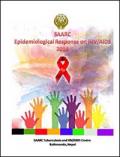
Resource | Publications,
The vision of the SAARC Tuberculosis and HIV/AIDS Centre is to be the leading institute to support and guide SAARC Member States to make the region free of TB and HIV/AIDS and the mission is to support the efforts of National TB and HIV/AIDS Control Programmes through evidence based policy guidance, coordination and technical support.
This is the 14th report on HIV epidemiology. This report "SAARC Epidemiological Response on HIV and AIDS – 2016" has incorporated the updated information and brief analysis on HIV/AIDS as of December 2015. It includes statistical information and brief analysis on HIV & AIDS and describes HIV/AIDS situation in global, regional and SAARC member states.
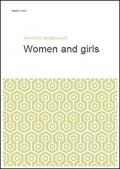
Resource | Reviews and Snapshots,
Socially, economically and politically empowered women and girls whose sexual and reproductive health and rights are fulfilled are more able to make safe and autonomous choices. This is important to prevent HIV and supports the well-being and dignity of women living with HIV.
Fulfilling human rights means ensuring that laws, policies and practices uphold the rights of women in all their diversity, including women living with HIV, sex workers, female injecting drug users, transgender women, indigenous women and women in conflict settings, so that their sexual and reproductive health and rights and HIV-related needs are met.
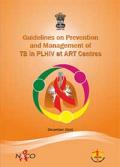
Resource | Guidelines,
The guidelines contained in this document are intended to delineate the processes to be followed for prevention and management of TB in people living with HIV (PLHIV) at antiretroviral therapy (ART) centres.
These guidelines describe the operational processes at ART centres for provision of single window services to PLHIV. The services include TB screening with 4S complex, referral for diagnosis of TB to DMC/CBNAAT, provision of daily anti-tubercular treatment (ATT), and initiation of Isoniazid Preventive Therapy (IPT) for TB prevention. The guidelines also describe the coordination required between NACP (ART centres) and RNTCP and provide direction to the managerial staff for smooth implementation of these initiatives. The guidelines serve as a ready reckoner on prevention and management of TB in PLHIV for healthcare providers at the ART centre.
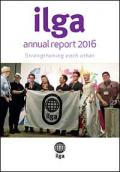
Resource | Publications,
2016 has been a year in which ILGA expanded its output considerably, reaping the seeds planted since its arrival in Geneva. During this year, ILGA has provided activists, media organisations and partners with eight high-quality publications: crucial advocacy and education tools like its authoritative State Sponsored Homophobia report, which has now reached its 11th edition, but also the Trans Legal Mapping Report, The ILGA-RIWI Global Attitudes Survey on LGBTI People, the research on Sexual Orientation, Gender Identity and Expression, and Sex Characteristics at the UPR, the guide on Advocating on Gender Identity and Gender Expression – The Committee on Economic, Social and Cultural Rights, two annual compilations for the Treaty Bodies and a summary of the 12 Special Procedures’references on SOGIESC issues.
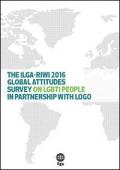
Resource | Publications,
On 17 May 2016, ILGA launched the ILGA-RIWI 2016 Global Attitudes Survey on LGBTI People in partnership with Logo. To our knowledge, it is the first global survey, and certainly the first longitudinal instrument, to ascertain public attitudes to LGBTI people.
This brochure begins by taking a wide-angle view on some global and regional results. The data returns that came to ILGA were disaggregated by sexual orientation, geography, gender identity (male/female/other), sex characteristic status, and age. There were 31 survey questions, 26 of which were substantively probing attitudes to LGBTI people and issues, five related to respondent profile. We touch on eight of them here, and only three in any detail.
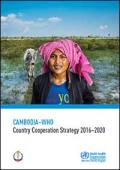
Resource | Publications,
A Country Cooperation Strategy (CCS) provides a medium-term strategic vision for World Health Organization (WHO) cooperation with a particular Member State in support of that country’s national health policies, strategies and plans.
WHO in consultation with the Government of Cambodia has drafted this Cambodia–WHO Country Cooperation Strategy 2016–2020 in parallel with the process of development of the Government’s Third Health Strategic Plan 2016–2020 (HSP3). The 2030 Agenda for Sustainable Development and the United Nations Development Assistance Framework 2016–2018 for Cambodia helped shape discussions among Government officials, WHO and other health partners.
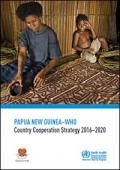
Resource | Publications,
The National Department of Health of Papua New Guinea and the World Health Organization (WHO) are pleased to present the Papua New Guinea–WHO Country Cooperation Strategy 2016–2020, which maps out priority health issues in Papua New Guinea to be addressed in cooperation with WHO over the next five years.
This country cooperation strategy (CCS) follows the midterm review of the National Health Plan 2011–2020 and other assessments of the country situation. Papua New Guinea faces a critical transition with increased decentralization of health services, ongoing challenges in providing essential services and increasing donor challenges. This CCS is strategically focused on sustainable solutions: strengthening health security and health systems, and improving partner coordination.
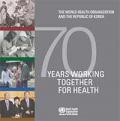
Resource | Publications,
This publication reviews the history of cooperation between the Republic of Korea and WHO over last 70 years, highlighting key achievements and challenges in public health for the Republic of Korea and WHO. Lessons learnt in cooperation between the Republic of Korea and WHO can guide other nations through the transition from an aid recipient to a country that can contribute to regional and global health initiatives.
This seven-decade history is divided into four specific periods of development and cooperation on health in the Republic of Korea, with each period covered by its own chapter.
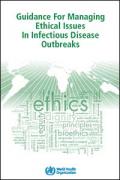
Resource | Guidelines,
Research is an integral part of the public health response – not only to learn about the current epidemic but also to build an evidence base for future epidemics. Research during an epidemic ranges from epidemiological and socio‑behavioral to clinical trials and toxicity studies, all of which are crucial.
The importance given to communication during an infectious disease outbreak can make or break public health efforts, and WHO takes this very seriously. This document outlines the ethical principles that should guide communication planning and implementation at every level from frontline workers to policy‑makers.
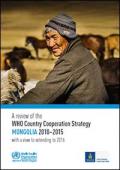
A Review of the WHO Country Cooperation Strategy Mongolia 2010–2015 with a View to Extending to 2016
Resource | Reviews and Snapshots,
The WHO Country Cooperation Strategy for Mongolia 2010–2015 was developed based on priorities identified in the national Health Sector Strategic Master Plan 2006–2015 (HSSMP) and the Government Action Plan 2008–2012. The CCS was also expected to link country health priorities to the WHO Medium-term Strategic Plan 2008–2013 and the WHO Eleventh General Programme of Work 2006–2015.
Since then, Mongolia has developed rapidly. The country has attained upper-middle income (1) status, poverty is falling and urbanization is accelerating. The health sector is maturing and now faces new challenges associated with economic and social transition. The donor environment has also changed noticeably.





